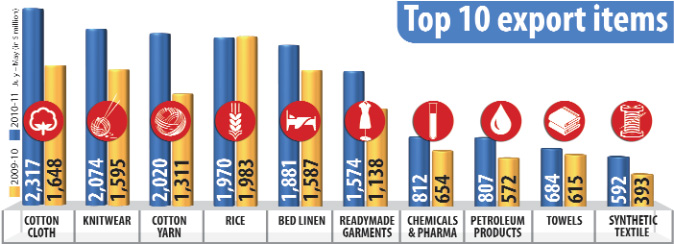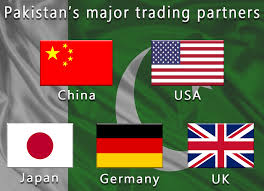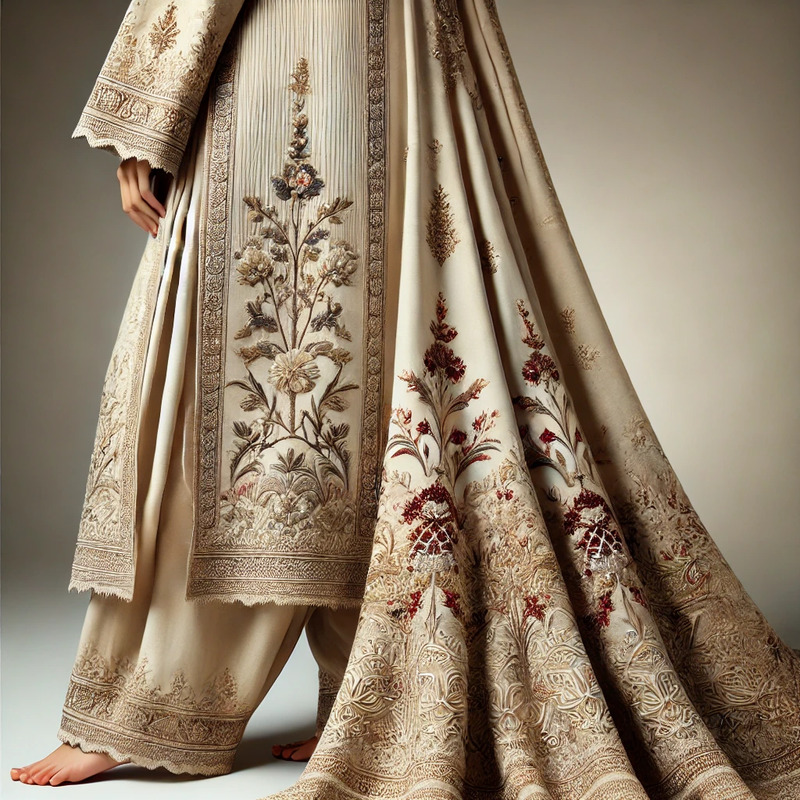Exporting From Pakistan
Exporting from Pakistan has been an enigma for most of our women entrepreneurs. How does one get into global sales from Pakistan?
First of all - let's clear it out at the outset - it is NOT taking a suitcase full of clothes/jewelry/any other item, and selling it at a home sale in other countries at your friends'/relatives' apartment/house.
The 'suitcase' transactions help you earn but do not add to the export base of your country and also do not build your performance as these transactions do not get documented.
Again, if it is just small quantities that sort of take care of your travel expense probably, its no big deal. However, if it is a regular practice of yours to send stuff with every friend /relative traveling abroad - you are doing a great disservice to your country and to yourself.
Exporting from Pakistan - Top 10 Export Items
Exports from Pakistan have been increasing on a year to year basis. Some of the major exports and trading partners of Pakistan are as shown below:

Courtesy: Pakistan Today - Top 10 Exports from Pakistan

Courtesy: Mashable Pakistan - Major Trading partners
Exporting From Pakistan - Trade Development Authority of Pakistan (TDAP)
Trade Development Authority of Pakistan is actively engaged in facilitating exporters from Pakistan. For details of their services visit the following link:
TDAP | Trade Development Authority of Pakistan
Exporting from Pakistan - Going global checklist
As you decide to start reaching global markets with your products, some of the basic things to consider are as follows:
- Develop a product
- Calculate Inputs Cost
- Lead Time
- Negotiation with buyers
- Issuing a Proforma Invoice & accepting an order
- Letter of Credit (L/C) for the order
- Shipment Scheduling & Shipping of Goods
- Freight Forwarders
Exporting from Pakistan - Develop a Product
By saying that you develop a product that is unique, it doesn't mean that you should 'invent' something, however, it means creating something that has its own style, for example, suppose you already make bridal wear - you can put new designs, may be fusion style for your market in US, UK and Canada, or any other country where there is Pakistani community.
Or suppose you make home textile, maybe you can try with the 'Banarsi prints' style that became quite a rage in the US.
Similarly, for party wear and for jewelry, you can either add old styles to new patterns or add western styles to give it a 'fusion-fashion' look.
Exprting from Pakistan - Calculate Input Costs
As you design your product try to put it on paper. You can write what went into the product as raw material along with its costs. As you prepare costing of your product remember to get invoices for all the products you buy.
Then add the number of man-hours used with cost and the electricity and rent as well as other overheads. This will give you a benchmark figure for cost per unit.
In exports the main earning factor is quantities. You should have the ability to sell at competitive rates and in bulk quantities. So your calculation will be in dozens, perhaps depending on the product. If its designers product these will be in lesser numbers.
Make sure to find out the HS-Code under which you can export your products. The correct HS-Code results in correct freight pricing for your buyer which improves your costing as well.
Now that you have arrived at a cost and the time it takes to put together the raw material and the initial order you can safely give a 'Lead Time'.
Exporting from Pakistan - Lead Time - Value in Exports
Lead Time is usually higher for the first order and with subsequent orders it becomes less. For example, for your initial order you might need a lead time of 45 - 60 days depending upon your product while for subsequent orders it may be 30 days or so.
This is because for the initial order you need to 'source' all the inputs which also includes locating vendors that offer best rates, local as well as foreign, testing for quality, calculation of consumption with trial runs etc. Once all these sources have been established and you have given your first order, repeats are comparatively easier.
Always remember to give adequate 'lead time' as dynamics of business can get impacted by unforeseen events. Take, for example, the recent COVID-19 pandemic. All of a sudden, many industries were placed under lock-down which was important to safeguard the labor and other staff members of these industries.
This was, of course, a major global event that impacted the whole world. However, many other unforeseen events of a simpler nature may result in delaying any of the basic requirements such as raw material procurement, labor availability or electricity/water outages.that's why, for the initial order adequate lead time of 60-90 days should be negotiated in consultation with the buyer.
Exporting from Pakistan - Negotiations with the buyer
As you enter into negotiations with a foreign buyer (a separate page on how to find foreign buyers) your homework should be complete. There are two kinds of foreign buyers - one that give orders for manufacturing i.e. they outsource manufacturing - this is the more prevalent practice. The second type of buyer is who takes your designs and sells them. A difficult option and not much in practice though still more possible with women as they make their own designs. These buyers usually go to the exhibitions to pick up new ideas and styles.
As you enter into negotiations with either; the price you quote should be competitive yet give you a good return. A rule of thumb in pricing goods for exports is 3 times of your cost so that you cover:
i) The actual cost with shipping and freight
ii) Any amount you may have to pay to agents/brokers and any unforeseen costs
iii) Profit margin
If you do not keep a profit margin your business will die. You should be getting your service charges as 'salary' which will be built in the 'cost' part of the product. The cost will be:
Cost = Raw Material + Labor + Overhead
Your payout comes from the overhead part of the cost. As your business grows bigger you will move the administrative expenses out of 'cost' and below the contribution margin.
Exporting from Pakistan - Issuing a Proforma Invoice & accepting an order
You offer her/him a price on FOB or C&F i.e. 'Freight on Board' or 'Cost and Freight' so now you have negotiated the price and given your buyer a lead time. If they ask send them a sample (you can charge for it if it is a costly item).
If the deal is struck and they place an order with you, send them your company's details along with bank account in the Invoice. The buyer will issue a Purchase Oder (PO) which you will accept (if you think it is okay) and then they should send an L/C (Letter of Credit) in your company's/firm's name.
Exporting from Pakistan - Letter of Credit for the order
Review the terms of the L/C along with your banker. Ensure that all the clauses are in place and the shipment schedule has taken into account the lead time.
You will have to ship by the date given in the L/C or obtain an extension well ahead in case you feel you will be late in shipping the goods.
Do a good job at exporting your products and you will have a regular source of very good income for a long time. Maintain quality and ship on time.
Exporting from Pakistan - Shipment Scheduling
Shipment scheduling for your export from Pakistan requires meticulous planning which also includes the type of packaging you do to save on space in the container carrying your goods. Always try to adjust quantities in such a manner that maximum number of items are filled in the given space.
The timing of the shipment is to be decided well in advance so that no extra costs are incurred due to delay in shipment. If it is not planned properly, the buyer can ask for discounts which would not reflect positively for any business.
In order to learn shipping of goods in terms of per container load and CBM as well as other aspects of shipping, visit the link- Shipping of Goods.
Exporting from Pakistan - Freight Forwarders
For shipment you would need the services of a freight forwarder. You should opt for one who is well experienced in booking shipments and offer you the best prices with reliable carriers. It can be carriers by road, by ship or by air. The most expensive is air lift as it charges on a per kilogram basis and is suitable mainly for perishable goods in smaller quantities.
- Home ›
- Knowledge Base ›
- Products and Trades ›
- Exporting from Pakistan ›
- Shipping of Goods


